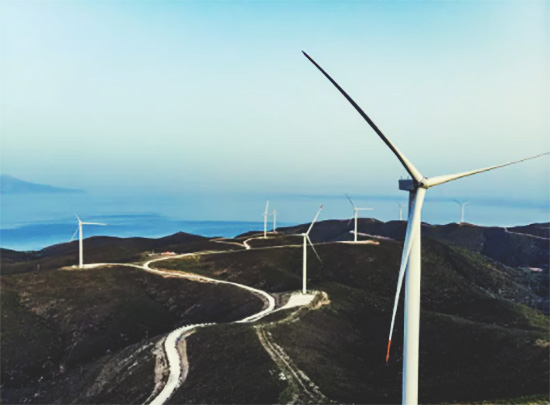Wind turbine efficiency does change with different orientations, but this effect is most pronounced with horizontal-axis wind turbines, which typically need to face the incoming wind to maximize wind energy capture. Below is a detailed analysis of the effects of different orientations on wind turbine efficiency.
Horizontal-axis wind turbine
Facing the wind (optimal orientation):
When a wind turbine faces the wind directly, that is, the wind is perpendicular to the plane of rotation of the turbine blades, the turbine is most efficient at capturing wind energy. The blades are fully pushed by the wind and rotate at optimal efficiency to generate electricity. In this case, the wind turbine generates electricity most efficiently because most of the wind energy is converted into electricity.
Sideways or diagonal winds (non-optimal orientation):
When the wind is not perpendicular to the plane of rotation of the wind turbine blades, that is, the wind is blowing from the side or diagonally, the turbine's power generation efficiency decreases. This is because some of the wind energy is wasted in the sideways movement of the blades instead of directly driving the blades to rotate.

However, modern horizontal axis wind turbines are usually equipped with a yaw system that can automatically or manually adjust the direction of the turbine to face the incoming wind as much as possible, thereby reducing the impact of non-optimal direction on power generation efficiency.
Upwind (theoretically no direct power generation):
Under upwind conditions (i.e. the wind direction is the same as the direction of blade rotation), theoretically, the wind turbine will not rotate to generate electricity due to the direct push of the wind. However, in actual operation, due to factors such as wind turbulence and ground effect, the turbine may still be affected to a certain extent and produce a weak rotation.
However, this rotation is almost negligible for power generation, so the power generation efficiency of wind turbines under upwind conditions is extremely low.
Vertical-axis wind turbines
Unlike horizontal-axis wind turbines, vertical-axis wind turbines have a rotation axis perpendicular to the ground. Such turbines are not restricted by wind direction changes and can capture energy from winds in all directions. Therefore, the power generation efficiency of vertical-axis wind turbines is relatively stable under wind conditions of different directions. However, due to its relatively complex structural design and low wind energy conversion efficiency (usually lower than that of horizontal axis wind turbines), its overall power generation efficiency may not be as high as that of horizontal axis wind turbines.
Wind forces from different directions have a significant impact on the efficiency of horizontal-axis wind turbines. The efficiency is highest when facing the wind directly; the efficiency decreases when facing the side or oblique wind; and almost no power is generated when facing the wind. Vertical-axis wind turbines are less affected by changes in wind direction. However, their overall power generation efficiency may be lower. To improve the power generation efficiency of wind turbines, the turbine type and installation location should be reasonably selected according to the local wind direction conditions, and the necessary auxiliary equipment such as yaw systems should be equipped to ensure that the turbine can operate facing the incoming wind direction.
